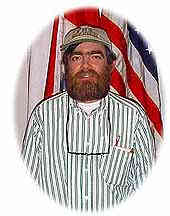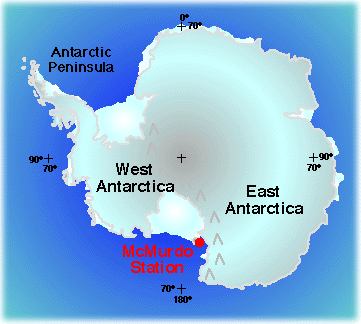
|
|






Hi! I am Fred Atwood. I have been a nature nut at least since the age of
9. Reading Doctor Dolittle books at that age made me want to travel all
over the world to study nature. I was especially interested in birds so
my parents enrolled me in a bird club at the Children's Museum in
Boston. My teacher there, Miss Miriam Dickey, cultivated my interest in
birds into an interest in EVERYTHING about nature. No, not just an
interest, a passionate fascination and curiosity! Somehow, walking in the
same places every week all year long, we still managed to find neat and
interesting things every time we went out. I didn't need to travel all
over the world to find cool and exciting things.
But guess what; now that I'm a teacher of third grade science, high school
Biology, AP Biology, Field Natural History, Field Ornithology and
Tropical Ecology, I have been blessed with the opportunity to take
teenagers all over the world to look for birds, take photos, and study
ecology, and I have LOVED it! We have been to Kenya, The Galapagos
Islands, The Amazon Basin, the Andes Mountains, Belize, Haiti, Trinidad,
Costa Rica, Big Bend National Park, the Everglades, Cape Cod, and Glacier
National Park, as well as many places in the Chesapeake Bay and Virginia
area where I live. Everywhere I go I am amazed at the spectacular beauty
and majesty of what I see and I marvel at the intricate interactions
between the organisms and their environment. Most of the ecosystems I have
seen have been very complicated and diverse. Now I am excited about the
opportunity to study the organisms of a unique and comparatively simple
ecosystem, the Antarctic, which has very few organisms, but where the
organisms have amazing adaptations to live in their extreme
environment.
I love getting my students involved in various field research projects. We
do bird banding, breeding bird surveys, and frog surveys. We are also doing
a long-term study of the effects of golf-course construction on the streams
and woods of a nearby park. My own research has included Digger Wasps,
House Sparrows, and Leach's Storm Petrels (a sea bird that nests in burrows
in spruce-clad islands in New Brunswick). My most recent field research
experience was a 9-month study of the ethnobiological uses of plants and
animals by three different indigenous cultures in the rain forests of Papua
New Guinea. (I did this as a volunteer for the Lakekamu Basin Integrated
Conservation and Development Project run by Conservation International.)
What do I do in my spare time? What spare time? I don't have much of it--no
teachers do--but I get outside as often as I can to observe nature. I take
lots and lots of nature photos (check out my website), I write, and I show inspirational slide shows about God and nature to youth groups, retirement homes, and churches.

Antarctic fish are amazing! How do they survive at temperatures as low as -1.9 degrees (Celsius)? Why don't they freeze into solid blocks of ice? How do Antarctic fish conserve energy? At these excruciatingly low temperatures, energy for the chemical reactions that run the body is hard to come by, so it must be used very efficiently. Only about 120 species of fish live in Antarctic waters, some of these live in more extreme conditions than others, and most of these extremists belong to a unique group of fish called the Notothenioids. These are the fish I'll be studying, some of which may weigh up to 100 pounds!
Most of these fantastic fish have antifreeze glycoproteins in their blood
and tissues which prevent them from freezing. They also lack a swim bladder
but have buoyant fat deposits and extremely light-weight skeletons made
largely out of cartilage instead of denser bone. This makes them neutrally
buoyant so they don't need to use energy to keep themselves positioned in
the water. As a result, a hundred pound fish seems to weigh less than a
postage stamp in the water. Some Antarctic fish even have white blood; they
save energy by doing away with red blood cells and hemoglobin, the protein
that all the other vertebrates have in abundance for carrying oxygen!
These fishes also have a very high concentration of salt in their blood and
tissue fluids, twice the concentration that is found in temperate zone
marine fishes like tuna and swordfish. Why? For the same reason that you
throw rock salt on the ice on your front steps, or the highway department
sprays salt on the roadways. As the salt dissolves in water, it gets in the
way of the water molecules, preventing them from joining together to form
ice crystals, and so it melts the ice. That's what is happening in these
very cold fish to keep them from freezing. This salt regulation is
primarily done by specialized cells in the gills called chloride cells
which are full of a maze of tubules covered with a very important
protein. This protein is an enzyme with the long and fancy name of
sodium-potassium-adenosine-tri-phosphatase (YOIKS!!! try saying that 10
times fast!) or Na-K/ATPase for short. Na-K/ATPase is what controls the
concentration of various kinds of salt ions. This enzyme in most fish uses
lots of energy (from ATP molecules) to pump salt out of the fish into the
sea. But in this below-freezing water where the fish's salt levels need to
be high to prevent the fish from freezing, it is also saving
energy!
So what is my research going to be? I will be working with another TEA teacher (Mr. Glenn Zwanzig), two professors (Dr. David Petzel and Dr. David Smith), and a crew of other researchers, to find out the role of hormones in regulating the activity of Na-K/ATPase in these fish. This same enzyme is found throughout the vertebrate world. Most of our own cells have it too. Perhaps there will even be some medical applications from what we learn.
Polar Classroom Activities:
Adaptations of Fishes for Survival in Polar Environments
Introduction
Activity 1: The Effect of Cold on Characteristics Important to Fishes
Activity 3 - Fish Anatomy: A Comparison Between Temperate and Antarctic Fishes

Fred
will be working at McMurdo Station during his field season in
Antarctica.

December 1998
| Su |
Mo |
Tu |
We |
Th |
Fr |
Sa |
| -- |
-- |
1 |
2 |
3 |
4 |
5 |
| 6 |
7 |
8 |
9 |
10 |
11 |
12 |
| 13 |
14 |
15 |
16 |
17 |
18 |
19 |
| 20 |
21 |
22 |
23 |
24 |
25 |
26 |
| 27 |
28 |
29 |
30 |
31 |
-- |
-- |
November 1998
October 1998
| Su |
Mo |
Tu |
We |
Th |
Fr |
Sa |
| -- |
-- |
-- |
-- |
1 |
2 |
3 |
| 4 |
5 |
6 |
7 |
8 |
9 |
10 |
| 11 |
12 |
13 |
14 |
15 |
16 |
17 |
| 18 |
19 |
20 |
21 |
22 |
23 |
24 |
| 25 |
26 |
27 |
28 |
29 |
30 |
31 |
Return to top of page
|






